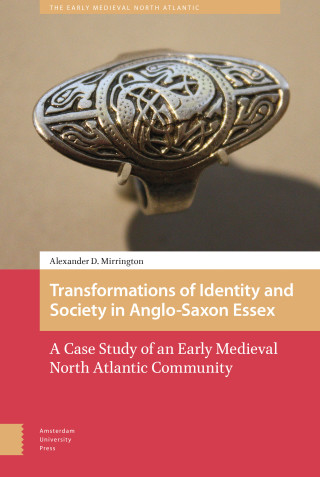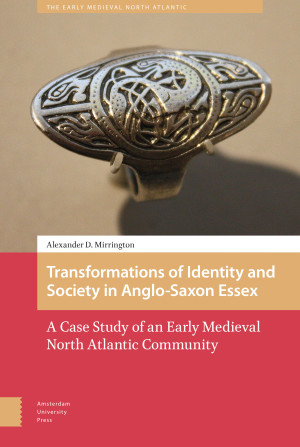Contents
Chapter 1: Introduction
General introduction
Topographical background of the Essex region
The research context
Group identity
Trade, exchange and networks
Social complexity
Previous literature on Anglo-Saxon Essex / Previous work in the region
Sources of evidence
Dress accessories
Pottery
Coinage
The quality of the evidence and limits of inference from excavated and unstratified data
How this book is structured
Major themes and findings
Chapter 2: c.AD 400-650
Introduction
Dress accessories, c.AD 400-c.650
Dress and identity in the 5th century
Dress and identity in the early 5th century
Late Roman military belt fittings
5th-century Continental imported brooches
Dress accessories with Quoit-Brooch Style decoration
Roman fashion
Patterns of dress and fashion, c.AD 450-600
Beads
Metal dress accessories AD c.450-c.600
'Saxon' dress among the 'East Saxons'
'Anglian' dress
Other influences on regional fashion
Francia
Kent
Changes in costume, c.AD 600-650
Kentish affiliation and the 'Final Phase', c.600-650
Conclusions
A new picture of early medieval dress use in Essex
Coinage use in 5th- and 6th-century Anglo-Saxon Essex
The earliest evidence of coinage use
Byzantine coins
Reuse of Roman coins
Coinage in Essex, c.AD 500-c.675
Tremisses and solidi
Shillings
Conclusions
Pottery use in 5th- and 6th-century Essex
Handmade local pottery
Fabric, chronology and distribution
Form
Origins
Imported French pottery
Summary
Discussion
Dress and identity in Essex c.400-600
Results from the study of early dress in Essex
The wider context of the construction of 'Anglo-Saxon' costume in the formation of Anglo-Saxon society in Essex
A middle-way interpretation
Early exchange systems evidenced by the use of material culture c. AD 400-600
5th-mid-7th-century coastal exchange
Early exchange and the expression of elite status
Summary
Chapter 3: c.AD 650-c.800
Introduction
Coinage c.AD 650-c. 800
Introduction
Silver deniers
English pale gold coinage
Coinage in Essex, c.AD 675-c.760
Primary and intermediate phase sceattas (c.675-c.710)
Secondary phase sceattas (c.710-c.760)
Coinage from Essex
Series B
Series S
Coinage from Kent
Series A
Series C
Kentish secondary phase sceattas
Coinage from London
East Anglian coinage
Mercian coinage
Northumbrian coinage
West Saxon coinage
Continental sceattas
Frisian
Danish
?French (Quentovic)
Coinage in Essex, c.760-c.850
Northumbrian stycas
English broad flan pennies
Mercian coinage
Offa
Conclusions
Pottery
The local pottery background
Imported pottery
Ipswich ware
Rhenish wares
French wares
Conclusions
Dress accessories c.AD 650-c.800
Dress and the reflection of maritime identities
Conclusions
General discussion
The end of regional styles and its implications
An alternative explanation
Contemporary landing places and sites of exchange in Essex
Tilbury
Barking
North-west Essex
Lashley Wood / Green
Canvey Island / Benfleet Creek
?Goldhanger Creek
Great Bromley
Bradwell
Fingringhoe
Little Oakley, Great Oakley, and the Harwich area
Summary and conclusions
The expansion of the coastal network in the 7th and 8th centuries
The evidence and conclusions from the present study
Exchange hubs and the relationship between town and country
Conclusions
Chapter 4: c.AD 800-1066
Introduction
Dress in Essex c.AD 800-1066
Disc brooches (9th-11th-centuries)
Strap-ends and the adoption of new art styles (9th-11th-centuries)
Lobed disc brooches (11th-century)
Scandinavian cultural affiliations
The first phase of Scandinavian rule (c.AD 877-917)
The second phase of Scandinavian rule (c.1016-42)
Summary
Coinage c.800-1066
Coinage c.AD 800-50
Mercian coinage after Offa, 796-c.850
West Saxon coinage, c.800-50
Coinage in Essex, c.850-973
West Saxon and Danelaw coinage, c.8

